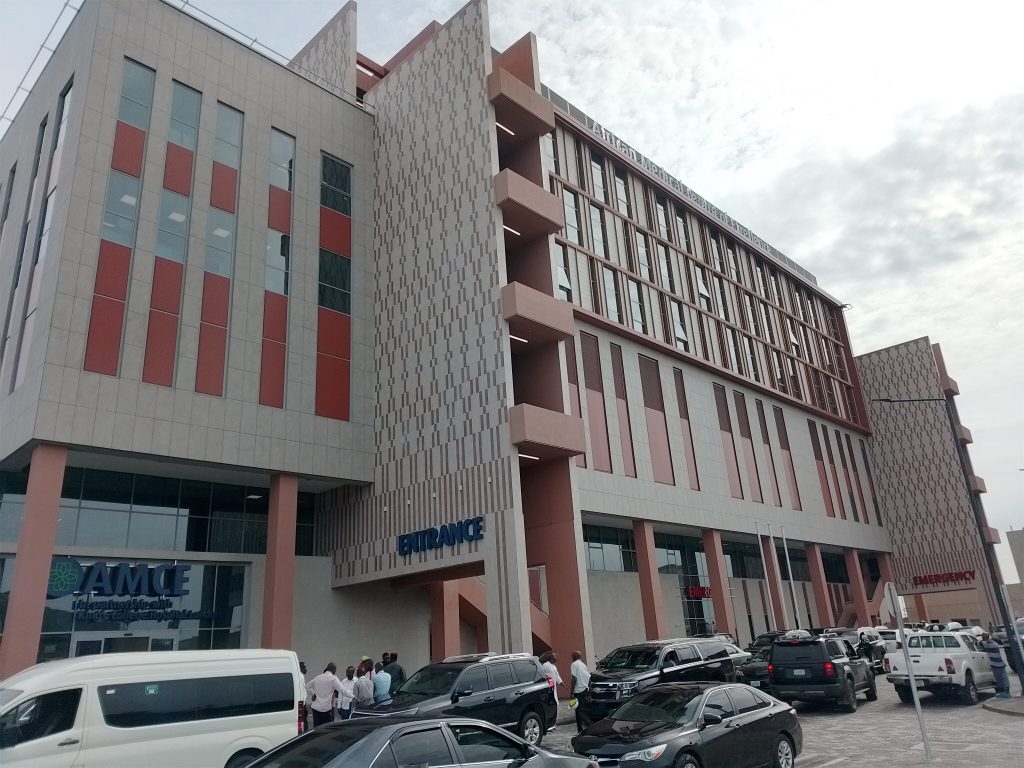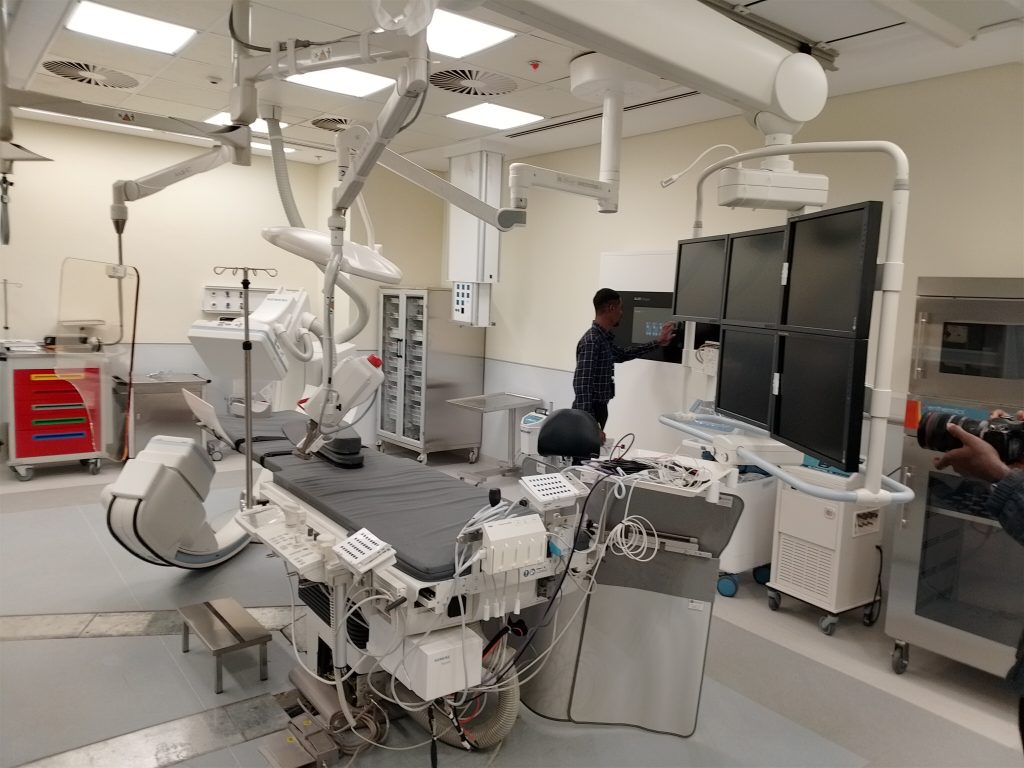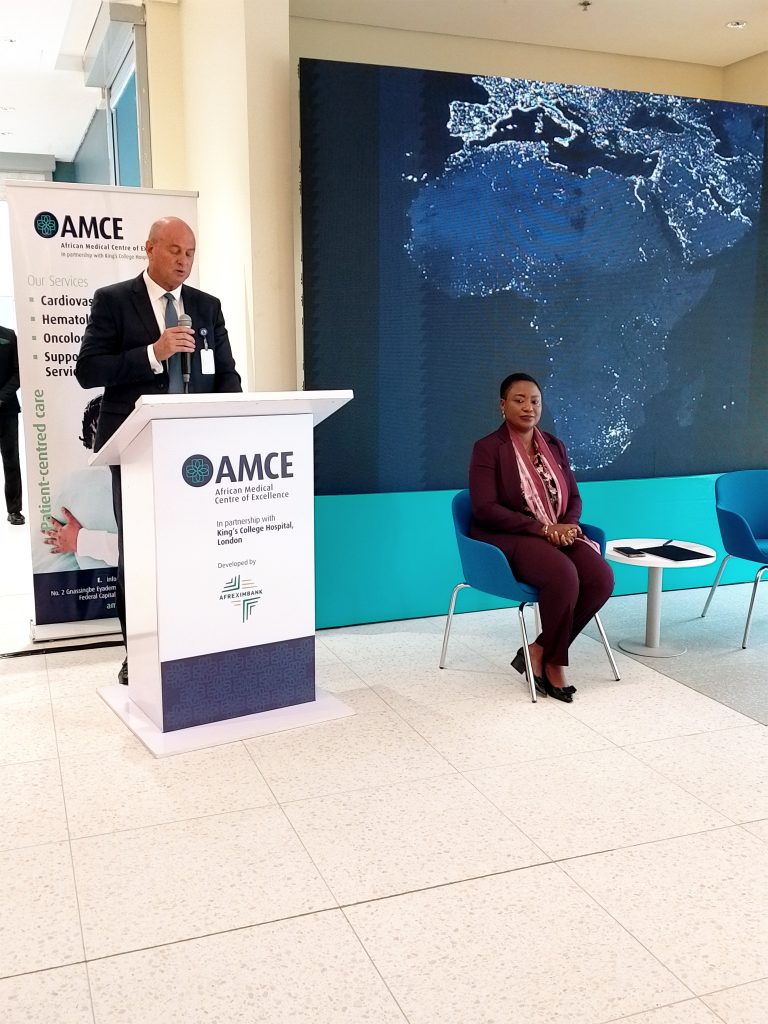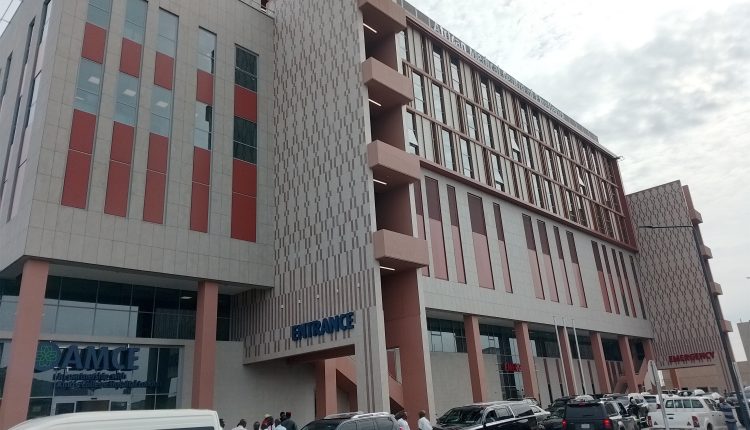The game changer is here as Abuja cyclotron-powered hospital set to transform healthcare in Nigeria
A $300 million Cyclotron hospital is poised to transform Abuja, positioning Nigeria as a continental health hub. Newsworth24 explores how this groundbreaking nuclear medicine facility, the first of its kind in the region, will revolutionize healthcare in Abuja with its multiplier economic, health, and research benefits for the country and the West African subregion.
Nigeria’s ambition to become a continental healthcare powerhouse takes a major leap with the commissioning of the African Medical Centre of Excellence (AMCE) in Abuja, a $300 million ultra-modern hospital anchored by West Africa’s first high-energy cyclotron. The groundbreaking facility marks a new chapter in the country’s medical history, combining world-class clinical care, advanced diagnostics, and cutting-edge research under one roof.

The AMCE, developed through a strategic partnership between Afreximbank, King’s College Hospital, London, and the Nigerian government, is designed to tackle the continent’s growing burden of non-communicable diseases such as cancer, cardiovascular illnesses, and neurological disorders. But more importantly, it positions Nigeria as a destination for medical excellence across Africa focusing on treating non-communicable diseases, including cancer, heart conditions, and blood disorders.
President Bola Tinubu, who unveiled the facility on June 5, 2025, echoed this sentiment, saying “This is our collective refusal to accept medical vulnerability as destiny. We’re not just treating the sick; we’re training the future.”
At the heart of this transformation is the 18MeV cyclotron—a particle accelerator that produces vital radioisotopes used in nuclear medicine. These isotopes power diagnostic tools like PET-CT scans, enabling early and precise detection of complex diseases, from cancer to Alzheimer’s. For patients in Nigeria, this means an end to long waits and expensive overseas travel. Instead, they can access life-saving care locally, faster and with greater accuracy.
The AMCE’s cyclotron also delivers substantial economic and clinical benefits. Nigeria loses an estimated $1 billion annually to medical tourism. This facility is expected to significantly reverse that outflow, providing services once sought abroad, while also attracting patients from neighbouring countries. Its projected patient volume of 350,000 over five years is expected to drive job creation, boost healthcare-related industries, and reposition Nigeria as a health hub.
The clinical capabilities of AMCE are equally formidable. Spanning 35,000 square metres across three buildings, the complex houses 170 inpatient beds, set to expand to 500, and includes 12 separate entrances for infection control and patient flow management. A dedicated power substation and six backup generators guarantee 24/7 operations, ensuring critical procedures are never disrupted.
Inside, the hospital offers a diagnostic imaging suite unmatched in sub-Saharan Africa. The cyclotron-powered PET-CT unit allows for same-day consultations, imaging, and biopsies—an unprecedented feat in regional cancer care. The centre also boasts the only functioning 3 Tesla MRI in West Africa and a 256-slice CT scanner, delivering ultra-high-resolution imaging for heart, brain, and full-body diagnostics.
Specialized tools such as spectral mammography, SPECT-CT gamma cameras, and cardiac blood flow monitors further enhance its ability to detect disease early and treat with precision. The facility’s Laboratory services are equally advanced. A genomics and molecular pathology lab provides comprehensive tumour sequencing in just 72 hours, supporting personalized cancer therapies. Mass spectrometry, rapid microbiology, and an automated blood bank system ensure precision and speed across diagnostics and emergency care. Its 3 Catheterization labs are the most of any hospital in the sub-region.

Beyond imaging and labs, AMCE offers treatment capabilities rivalling top international hospitals. Image-Guided Radiation Therapy (IGRT) delivers sub-millimetre accuracy in tumour targeting. Its cardiac centre includes catheterization and electrophysiology labs for procedures like ablations and valve replacements, while a bone marrow transplant unit features cryogenic stem cell storage and negative-pressure isolation suites.
In the intensive care unit, 20 beds equipped with cardiopulmonary resuscitation (CPR) equipment are monitored through AI-enabled dashboards that flag early signs of sepsis and respiratory failure, empowering clinicians to intervene before conditions worsen.
Yet, the AMCE is more than a hospital. It is a research and training hub. The cyclotron enables the production of isotopes for academic and clinical studies, offering local scientists unprecedented opportunities to advance nuclear medicine in Africa. With plans underway for similar facilities across the continent, the AMCE model promises to uplift Africa’s medical research capacity.
Afreximbank President Prof. Benedict Oramah described the project as “a journey from despair to hope,” inspired by personal experience and institutional vision. This is about healthcare sovereignty,” he said, announcing a $75 million launch fund for the Africa Life Sciences Foundation, targeting $600 million to deepen medical research, especially for neglected diseases like sickle cell.
Brian Deaver, CEO of AMCE, emphasized that the facility represents a bold declaration of African capability and independence in healthcare, while revealing plans for a $150 million residential structure to house staff, researchers, students, and technical partners, in addition to addressing anticipated transportation needs of the facility. “We’ve shown that Africa can build, staff, and operate world-class hospitals. This is not charity, it’s strategy. We don’t have a helipad yet, but we have the capability. This project is currently sited on five hectares, and we’re expanding to 20 hectares. So yes, it’s one of the things we’re considering to ensure emergency access and patient convenience.”
He explained that AMCE is being developed in phases, with the current 170-bed facility set to expand. “Three years after we open, we’ll begin the second phase right next to this building. We’re aiming for a total of 500 beds. This is just phase one. We have the capacity in both inpatient and outpatient care to see a high volume of patients. And in our specialty areas, we’re going to be comprehensive. We’ll keep expanding the services available to Nigerians and West Africans.”
The Chief Medical Officer of AMCE, Aisha Umar, highlighted the institution’s long-term commitment to excellence and operational reliability, explaining that a dedicated Facilities Building houses vital systems such as water treatment, fire safety, and power generation, ensuring uninterrupted services.
“AMCE is more than a hospital, it’s a commitment to global best practices. Maintenance is not an afterthought here; it’s a cornerstone. One of the major challenges in African healthcare is equipment maintenance. That’s why we’ve designed AMCE with sustainability in mind. From central air conditioning to imaging machines, everything will be maintained under service agreements and by trained in-house staff.
“Our equipment is cutting-edge, two Linear Accelerators, multiple CT scanners, and Nigeria’s first and only 3-Tesla MRI—far more advanced than the existing 1.5-Tesla units in the country and the sub-region. We don’t want patients turned away due to malfunctioning machines. We’ve planned for redundancy, and our personnel will be trained not just to operate but to troubleshoot and maintain the systems. This hospital is also housing 3 Catheterization laboratories the most by any hospital in West Africa, I’m proud to say, she noted.
Oluranti Doherty, Managing Director, Export Development at Afreximbank, stressed the investment’s broader significance while also emphasizing that the initiative is not profit-driven.
“This is not a loan. It’s not a grant. It’s a statement about Africa,” she asserted. “With project costs projected to reach $1 billion at full completion, every dollar invested by Afreximbank, Bank of Industry, and NNPC Limited is equity, a commitment to sustainable healthcare on the continent. None of the partners is looking for quick returns. Their focus is on providing advanced medicine in Nigeria and West Africa, and unlocking broader health-sector economic gains—particularly in medical device manufacturing and trade that can contribute meaningfully to our GDPs,” Doherty said.
The AMCE’s impact, both immediate and long-term, is profound. From reversing medical tourism to saving lives through earlier diagnoses and personalized treatments, this state-of-the-art hospital represents a bold step toward healthcare equity in Africa. It signals a future where Africans no longer need to look beyond their borders for excellence in care. Now, excellence lives here.


